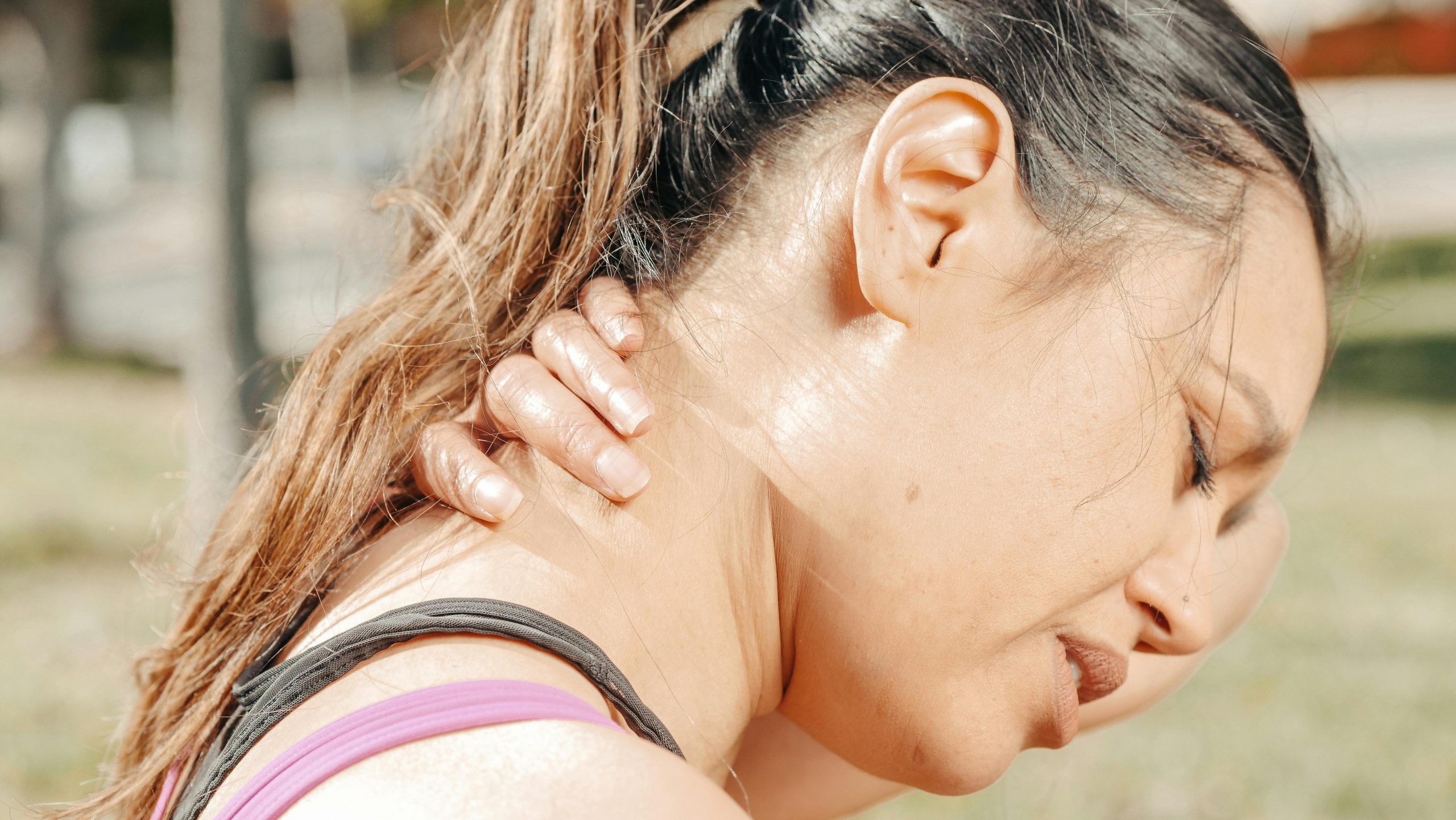If you’ve suffered a concussion, you’re likely familiar with the frustrating symptoms: persistent headaches, dizziness, difficulty concentrating, and neck pain that just won’t go away. But what if many of these lingering symptoms might not be coming from your brain alone but from your neck?
Recent research is uncovering a crucial connection between cervical spine (neck) injuries and concussion recovery that could change how we approach these injuries.
Understanding the Three Types of Concussion
Not all concussions happen the same way. Understanding how your injury occurred can help explain why neck involvement is so common. There are three main mechanisms:
- Direct Impact Injuries
These occur when the head directly strikes or is struck by an object. Common examples include:
- Rugby tackles where the head makes contact with another player, the ground, or goal posts
- Horse riding accidents where riders fall and strike their head on the ground or are kicked by a horse
- Football headers or collisions with other players
- Boxing or martial arts strikes to the head
During direct impact, the force travels through the skull to the brain, but the neck also experiences significant stress as it attempts to stabilize the head during and after impact.
- Acceleration-Deceleration Injuries (Whiplash)
These injuries occur when the head rapidly speeds up and slows down without necessarily striking anything:
- Road traffic accidents (RTAs), particularly rear-end collisions where the head is thrown forward and backward
- Car versus pedestrian accidents where the body is thrown
- Cycling accidents where riders are thrown from their bikes
- High-speed skiing or snowboarding crashes
This mechanism places enormous strain on the cervical spine as the head “whips” back and forth. During these injuries, your neck goes through four distinct phases:
- Initial position – The starting posture of your head and neck
- Retraction – Force transmitted through the cervical vertebrae
- Extension – The head and neck are forced into extreme extension
- Rebound – The tissues snap back, potentially causing soft tissue injury
The neck injury component is often just as significant as any brain injury in these cases.
- Blast Injuries
While less common in civilian life, blast injuries can occur from:
- Industrial explosions
- Firework accidents
- Military service-related incidents
The crucial point: All three types of concussion create forces that affect not just your brain but also your cervical spine. This is why neck dysfunction is so common after concussion, regardless of the injury mechanism.
The Neck-Concussion Connection You Need to Know
When most people think of concussions, they focus solely on brain injury. However, research shows something surprising: neck injuries commonly occur alongside concussions, particularly in females, who experience significantly higher rates of comorbid neck injuries between ages 5-49 years (Sutton et. al. 2019). This is especially true for motor vehicle collisions and sports-related concussions.
Why does this matter? Because many concussion symptoms including headache, dizziness, balance problems, and even cognitive difficulties can arise from cervical spine dysfunction rather than, or in addition to, brain injury itself (Leddy et. al 2021).
Here’s the real problem: symptoms alone cannot distinguish between brain injury and cervical injury since they can be nearly identical (Leddy et. al 2021). This means you could be recovering from a “concussion” for months when your symptoms are actually coming from, or significantly complicated by, a neck injury.
Why the Neck Is So Vulnerable During Concussion
Whether you’ve been in an RTA, taken a hard fall from a horse, or been involved in a rugby collision, your neck muscles act as shock absorbers for your head. Think of them like the suspension system in a car. When they’re weak or injured, your brain experiences more forceful movement during impact.
The neck muscles, particularly the sternocleidomastoid (SCM), play a critical role in reducing head acceleration during impact. Research shows that stronger neck muscles can decrease head acceleration and potentially reduce concussion risk by as much as 5% for every pound of increased neck strength (Streifer et. al. 2019).
Here’s where it gets interesting: research indicates that females have weaker and anatomically distinct necks compared to males (Streifer et. al. 2019), which may explain why they’re at greater risk for both neck injuries and concussions, as well as experiencing longer recovery times. This is particularly relevant in equestrian sports, where female riders predominate and falls are common.
The Upper Cervical Spine: Ground Zero for Post-Concussion Symptoms
The upper cervical spine, particularly the C1 (atlas) and C2 (axis) vertebrae at the very top of your neck, is especially important in concussion recovery. These bones sit right at the base of your skull. Here’s why they matter so much:
- Headache Generation
The upper cervical spine (C1-C3) contains proprioceptors and nerve connections that can generate cervicogenic headaches. These are headaches that originate from the neck rather than the brain. They develop when cervical disorders occur during the same traumatic event as a concussion and significantly improve when cervical dysfunction is addressed (Cheever et. al. 2016).
Whether you’ve been in a car accident, suffered a rugby injury, or taken a fall from a horse, the whiplash-like forces can damage the delicate structures of your upper neck, leading to persistent headaches that are often mistaken for purely concussion-related symptoms.
- Dizziness and Balance Problems
Your cervical spine houses numerous proprioceptive sensors that provide crucial information about head and neck position to your brain. When these sensors are disrupted by injury, they can cause sensations of dizziness, imbalance, and disorientation, symptoms often mistakenly attributed solely to brain injury (Cheever et. al. 2016).
These cervical afferents (nerve signals) interact directly with the vestibular nuclei and superior colliculi to coordinate important reflexes required for gaze stabilization and postural stability. In simpler terms, your neck talks to your balance system and helps keep your vision stable when you move your head.
This is particularly problematic for athletes trying to return to sport or riders trying to return to horses, as balance and spatial awareness are critical for these activities.
Cervical spine dysfunction can affect the cervico-ocular reflex, which helps stabilize your gaze during head movements. When your neck is injured, abnormal signals from the cervical spine can alter this reflex, contributing to blurred vision, difficulty focusing, and visual tracking problems commonly seen after concussion.
Key Signs Your Neck May Be Contributing to Your Symptoms
Watch for these indicators that cervical dysfunction may be playing a role in your persistent symptoms:
- Neck pain or stiffness accompanying your headaches
- Headaches that worsen with neck movement or certain neck positions
- Dizziness that increases when turning your head or changing positions
- Symptoms that don’t improve with standard concussion rest protocols
- Difficulty maintaining focus during activities requiring head movement
- Balance problems that worsen with eyes closed
- Symptoms that began after an RTA, fall from a horse, or contact sport injury
For Part 2 and to learn on Science Behind Upper Cervical Care for Concussion Recovery, click here.


